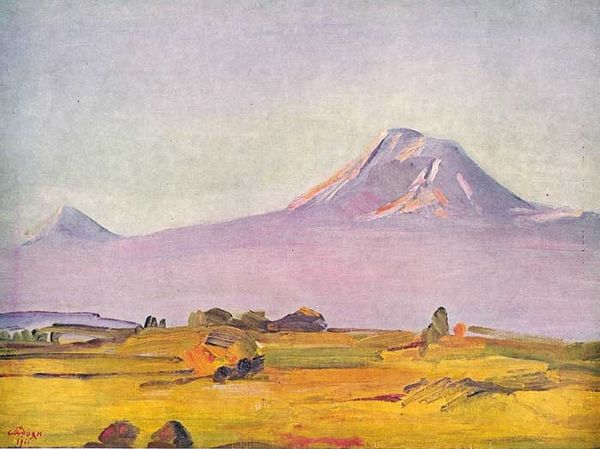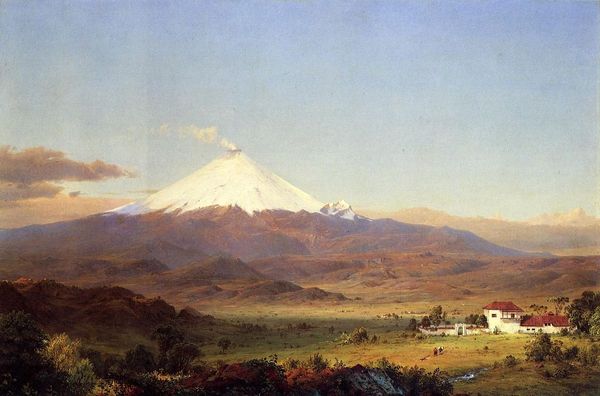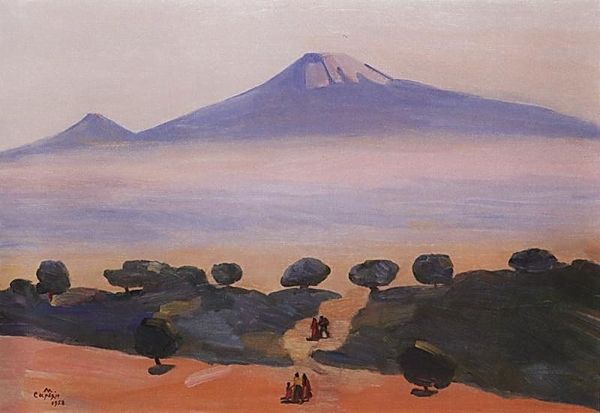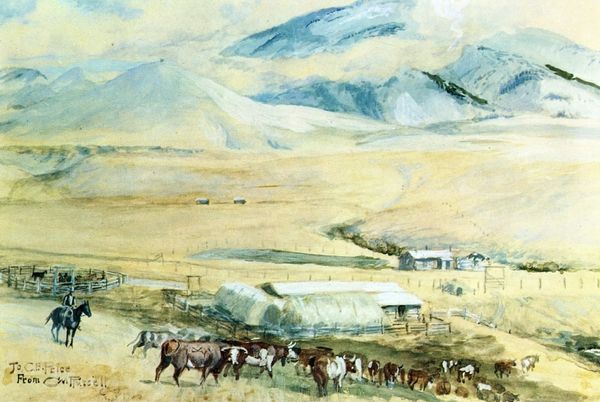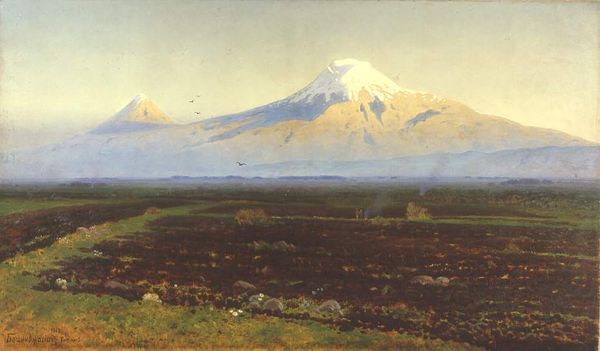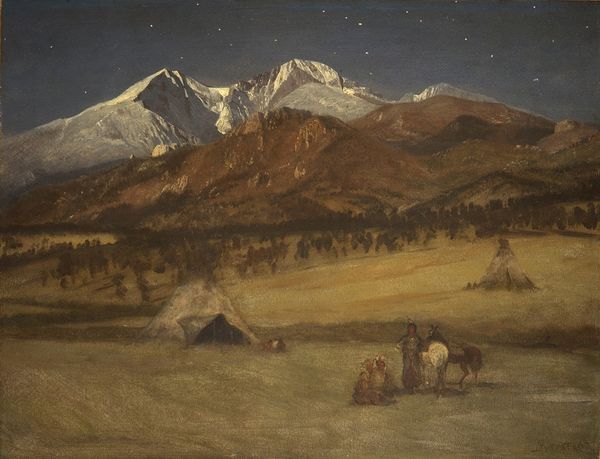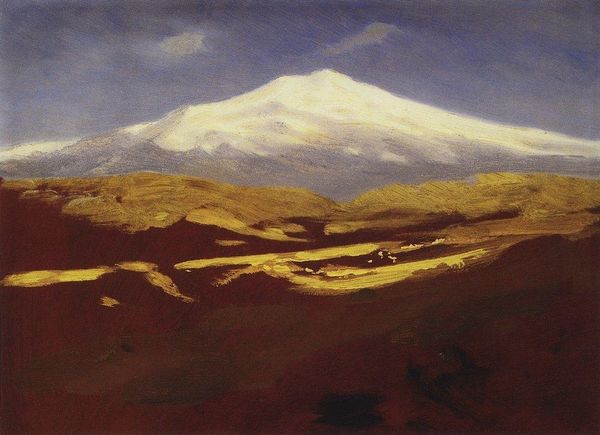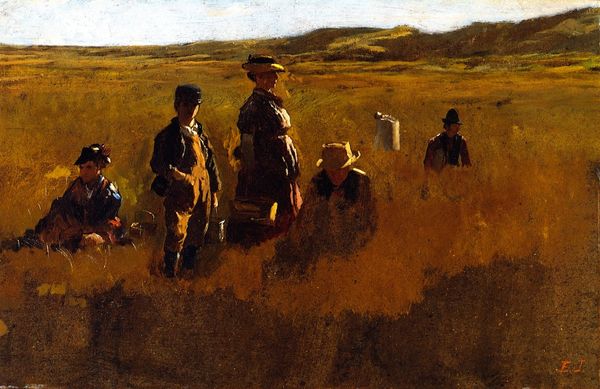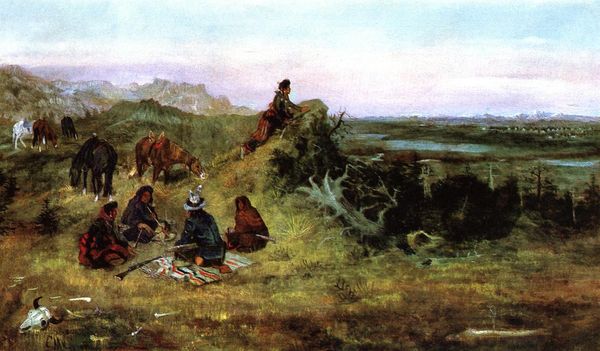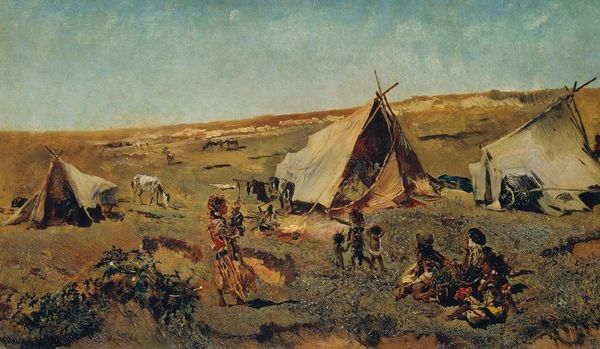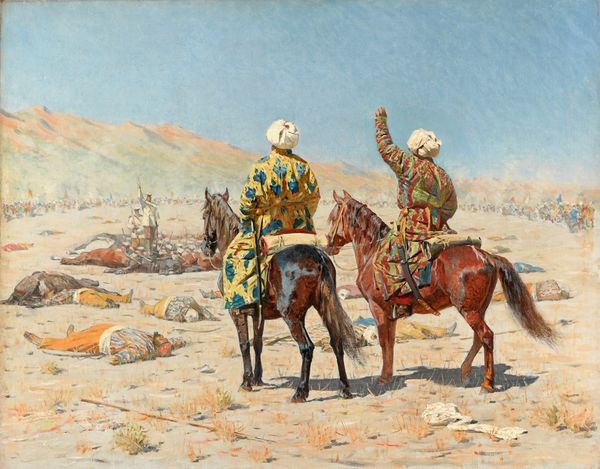
oil-paint
#
impressionism
#
oil-paint
#
landscape
#
oil painting
#
group-portraits
#
orientalism
#
mixed media
#
watercolor
Dimensions: 21.6 x 26.7 cm
Copyright: Public domain
Editor: This is Edwin Lord Weeks's "Persians Lunching on the Grass, Mt. Ararat in the Distance," painted in oil. It looks like a snapshot of a casual gathering. How should we interpret it? Curator: Well, let's consider the loaded term, "Orientalism." How does the painting, consciously or unconsciously, participate in representing the "Orient" for a Western audience? Think about who is included and who is not. Editor: So you're saying this isn't just a landscape with figures; it's a constructed view meant to convey something specific? I mean, I immediately think of leisure, maybe an exotic sort of freedom, just from the title! Curator: Precisely! Consider the gaze. Whose gaze does this painting reflect? Weeks was an American artist traveling in Persia. The subjects, while seemingly relaxed, are presented for consumption by a Western audience. Do you see how their identities might be flattened? The painting aestheticizes their existence and minimizes complexity, framing them through a lens of exoticism. How much agency do you think the figures portrayed have? Editor: Hmm, it does feel like they're being observed, rather than simply existing. The mountain backdrop adds to that sense of vastness and maybe even the "otherness" of the scene. Curator: Right. Even the very act of "lunching on the grass" takes on a different connotation when viewed through the lens of Orientalism. It's crucial to question how such representations contribute to power imbalances and perpetuate stereotypes. Editor: That makes me see it very differently. I'd been focused on the artistic technique but missed the deeper, problematic layers. Curator: Recognizing those layers allows us to engage critically with art and its role in shaping cultural perceptions. Editor: I appreciate you pointing out those issues and cultural contexts. I’m going to look for this sort of visual dynamic in other paintings from this era now. Curator: Exactly! Keep questioning those gazes!
Comments
No comments
Be the first to comment and join the conversation on the ultimate creative platform.
